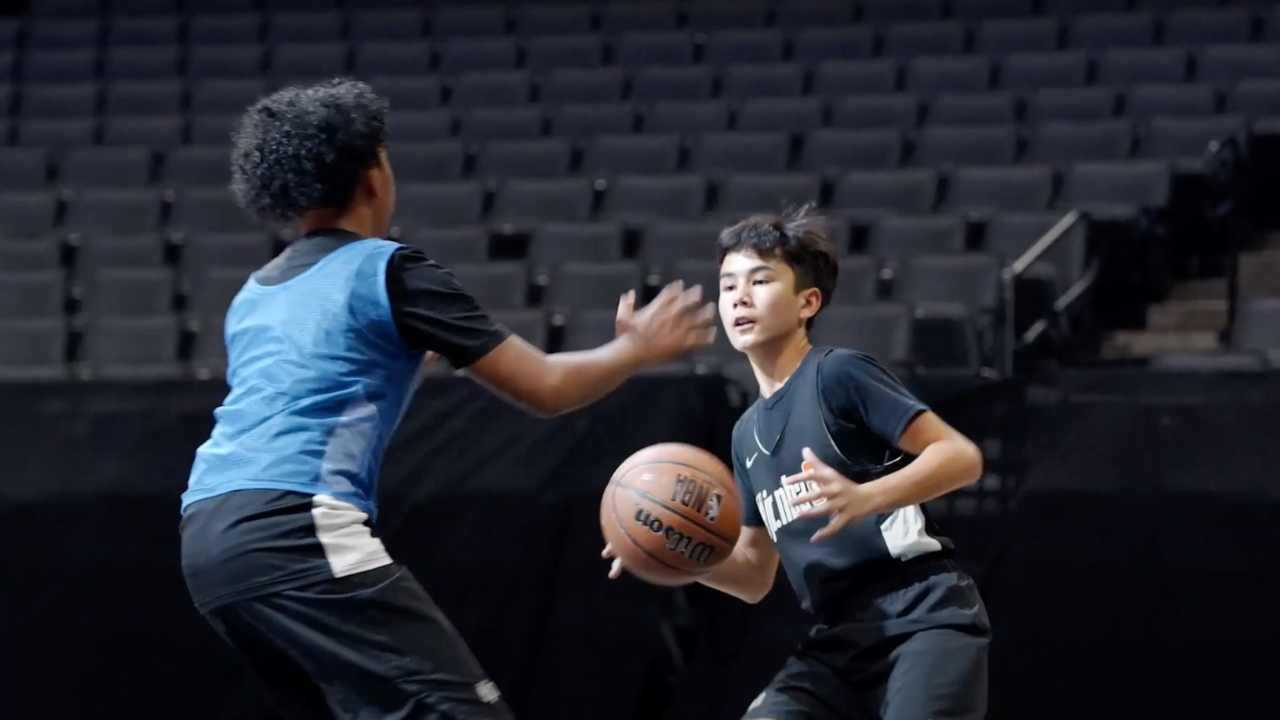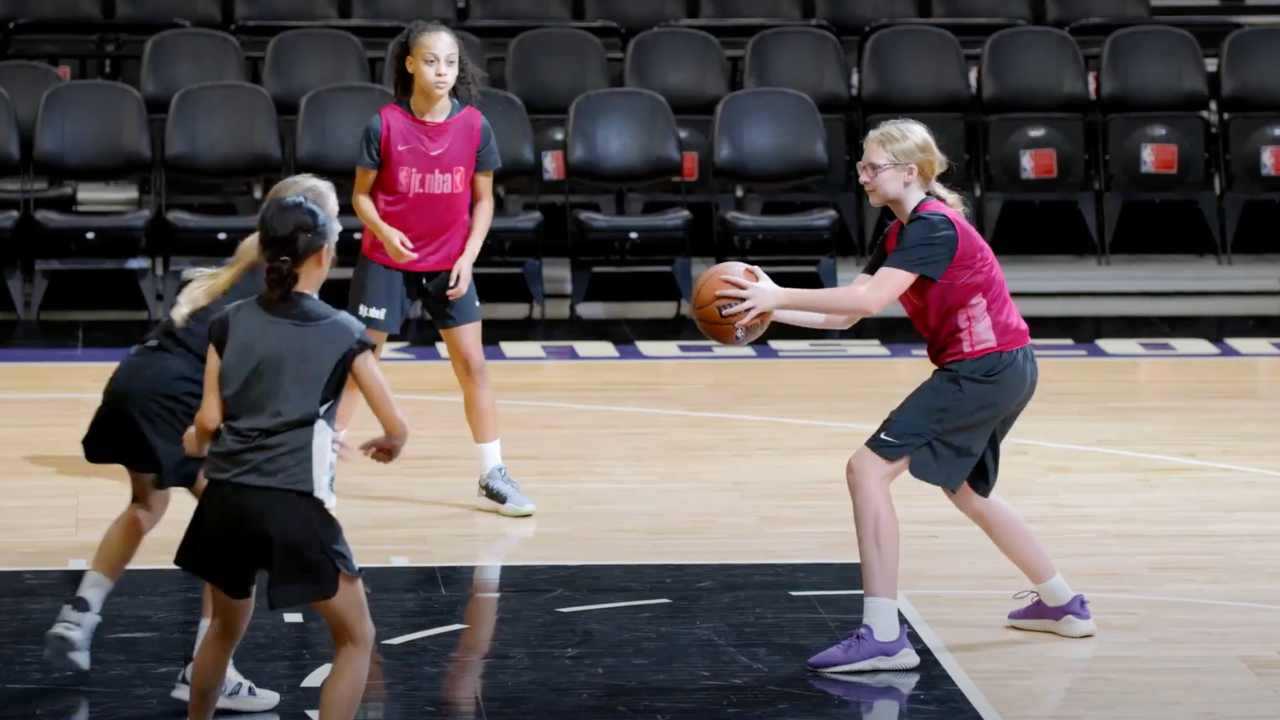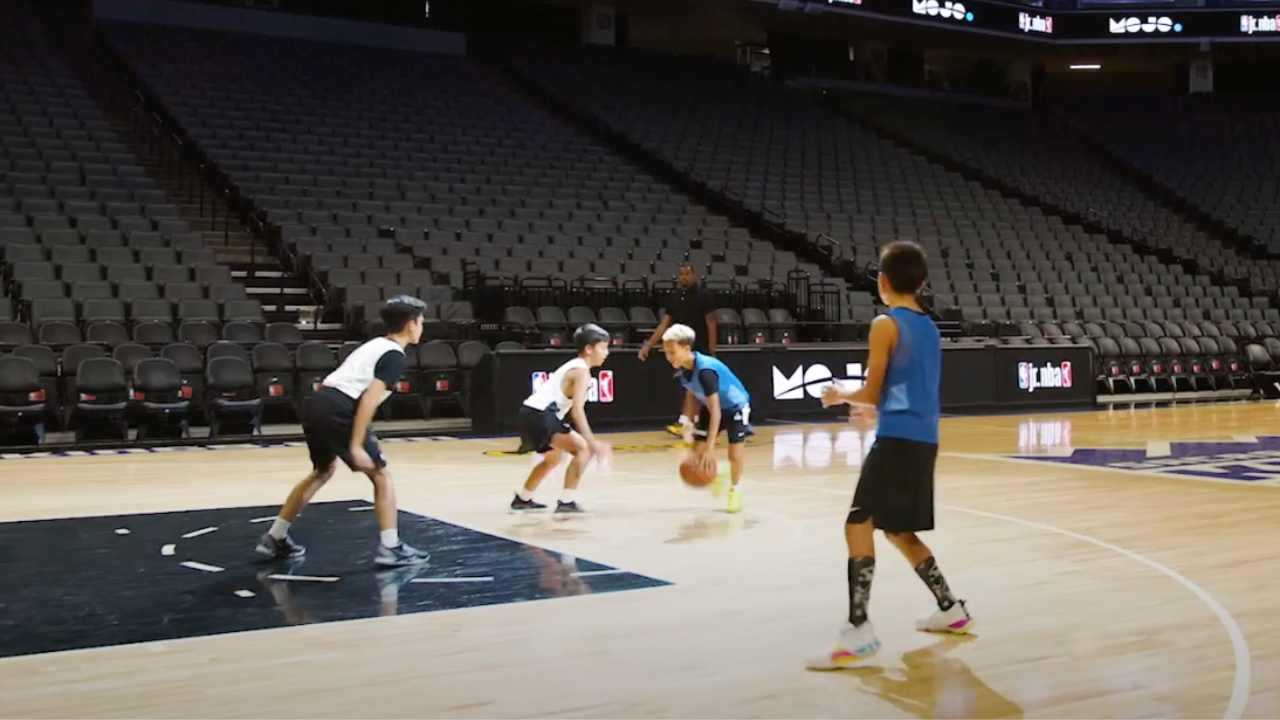What Is the Triple-Threat Position?
This key basketball skill gives players all the options
Sarah Lindenfeld Hall
| 3 min read

Canva
In the game of basketball, whether you’re a 5-year-old rec player or a 21-year-old collegiate superstar on the way to the NBA, there are some basics, and the triple-threat position is one of them. When in the triple-threat stance, a player is ready to complete three key moves: shoot, dribble or pass.
“It’s just one of those core fundamentals of the game,” says Evan Unrau, a former Division I basketball coach and director of PeacePlayers International, a nonprofit that brings kids together through sports. “Being in a position to shoot the ball, dribble the ball, pass the ball is a very dynamic physical position to be in.”
Moving into the triple-threat
Here’s how players should be positioned to become a triple threat:
- Feet should be shoulder width apart, and knees bent
- Weight is shifted onto the balls of the feet
- The ball should be in a protective pocket near the hip
- Eyes should be looking up, not down at the ground
How to teach triple-threat position
Triple-threat position isn’t usually taught on its own. It’s often packaged together with jump stops, when a player jumps and stops on both feet, and pivots, when one foot remains on the ground while the other moves, says Unrau.
With both jump stops and pivots, players also are in a dynamic, athletic position, often lower to the ground, on balance — and ready to move.
“Those are just really synonymous with triple-threat,” she says.
As coaches demonstrate the triple-threat position, good phrases to help players remember the proper position include “be on balance,” “eyes up” and “protecting the basketball,” Unrau says.
Activities that reinforce the triple-threat
Unrau suggests two activities to help reinforce the triple-threat.
Jump Stop — Triple-Threat — Pivot
- Start kids at the baseline.
- Have them take three dribbles and blow the whistle.
- Instruct them to do a jump stop and get into the triple-threat stance.
You can eventually add a pivot to that jump stop to triple-threat transition, Unrau says.
Eyes Up
It’s hard to shoot the ball or find a lane to the basket if your eyes are focused on the ground. A key to the triple-threat position for players is looking up, but that’s not always easy. “Keeping their eyes up is a really hard skill to teach, at any level,” Unrau says. “Pros sometimes put their heads down when they catch the ball, or they don’t look at the rim.”
To help kids remember to keep their eyes up, Unrau shares this activity. Position a coach under the rim. Pass the ball to a player. Have them square up to the basket. Then, have them call out the number that the coach is holding up.
Keeping the fun in the fundamentals
Whatever lesson you’re teaching young players on the court, Unrau says that the key is to challenge, but not overwhelm. Remember that even the pros focus on the basics throughout their careers.
“Fundamentals are a journey,” she says. “Mastering the basics is a journey and one you’ll be on through the entirety of your career playing the game.”




